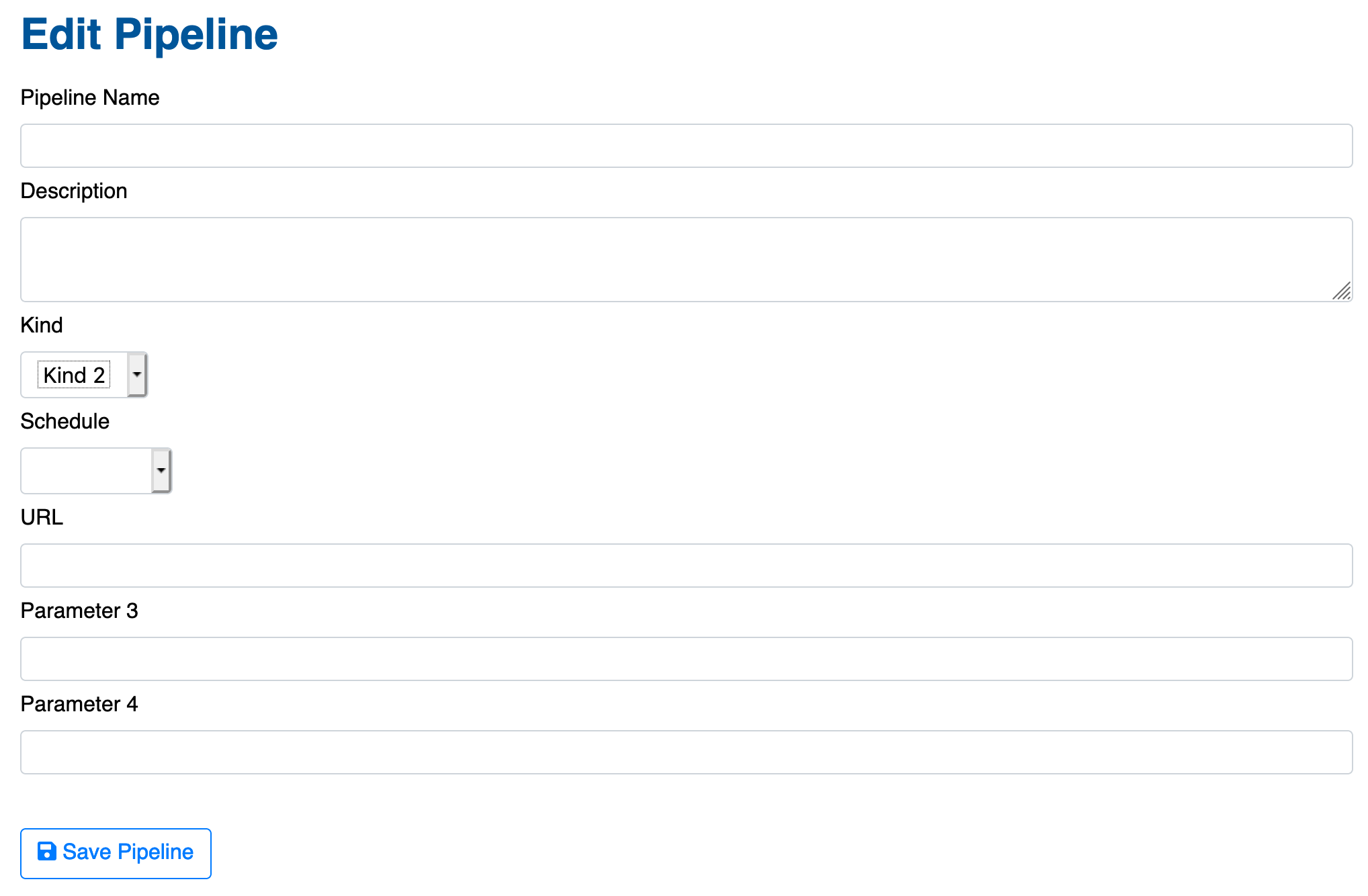DGP UI
This library and app provide a wrapper around airflow, providing a means to add / remove DAGs (Pipelines) via a web-ui based on a configuration defining the Pipeline 'kinds' and the parameters each kind requires.
Pipeline Dashboard
Edit/New Pipeline
Pipeline Status
Quickstart
- Create a folder containing:
- A
configuration.yamlfile with the details on your pipeline kinds, e.g.
{
"kinds": [
{
"name": "kind1",
"display": "Kind 1",
"fields": [
{
"name": "param1",
"display": "Parameter 1"
},
{
"name": "param2",
"display": "Parameter 2"
}
]
},
{
"name": "kind2",
"display": "Kind 2",
"fields": [
{
"name": "param3",
"display": "Parameter 3"
},
{
"name": "param4",
"display": "Parameter 4"
}
]
}
],
"schedules": [
{
"name": "monthly",
"display": "Monthly"
},
{
"name": "daily",
"display": "Daily"
}
]
}(If schedules are not specified, a default schedules list will be used).
- The Airflow DAGs Creator - a Python file that reads the pipeline configuration and creates your Airflow DAGs. Sample code:
import datetime
import logging
from airflow import DAG
from airflow.operators.bash_operator import BashOperator
from airflow.utils import dates
from etl_server.models import Models
etl_models = Models()
default_args = {
'owner': 'Airflow',
'depends_on_past': False,
'start_date': dates.days_ago(1),
}
for pipeline in etl_models.all_pipelines():
# pipeline looks like this:
# {
# "id": "<identifier>",
# "name": "<English Name of Pipeline>",
# "kind": "<kind-name>",
# "schedule": "<schedule>",
# "params": {
# "field1": "value1",
# .. other fields, based on kind's fields in configuration
# }
# }
dag_id = pipeline['id']
logging.info('Initializing DAG %s', dag_id)
dag = DAG(dag_id, default_args=default_args, schedule_interval=datetime.timedelta(days=1))
task = BashOperator(task_id=dag_id,
bash_command='echo "%s"; sleep 10 ; echo done' % pipeline['name'],
dag=dag)
globals()[dag_id] = dag- Use a
docker-composesetup to run the server, an exampledocker-compose.yamlfile:
version: "3"
services:
db:
image: postgres:12
environment:
POSTGRES_PASSWORD: postgres
POSTGRES_USER: postgres
POSTGRES_DB: etls
expose:
- 5432
volumes:
- /var/lib/postgresql/data
server:
build: .
image: akariv/airflow-config-ui
environment:
DATABASE_URL: postgresql://postgres:postgres@db/etls
AIRFLOW__CORE__SQL_ALCHEMY_CONN: postgresql://postgres:postgres@db/etls
expose:
- 5000
ports:
- 5000:5000
depends_on:
- db
volumes:
- /path/to/local/dags/folder/:/app/dagsAfter running (docker-compose up -d server), open your browser at http://localhost:5000 to see the web UI.
Another option is to create a new Docker image which inherits from akariv/airflow-config-ui and replaces the contents of /app/dags/ with the configuration.json file and your DAG Python files.



